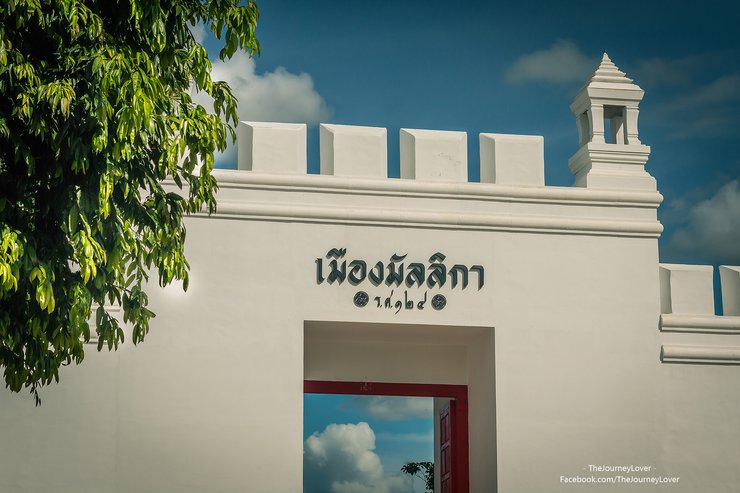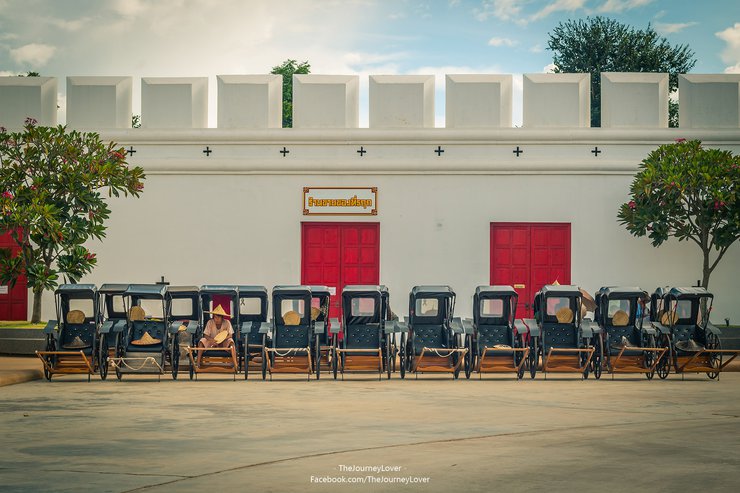Thailand boasts a wealth of historical tourist destinations scattered across various provinces. While some recreate the atmosphere of bygone eras through retro markets or annual festivals, "Mulika 124" offers a truly immersive experience, transporting visitors back to a specific historical period.
According to the information provided on the Mallika City website...
Mueang Boran is a historical park that recreates the way of life of the Siamese people in the Chao Phraya River basin during the reign of King Chulalongkorn (Rama V). The year 1881 (R.S. 124) marked a significant turning point in Siamese society with the abolition of slavery. Freed slaves had to forge their own paths, finding new ways to live and work independently. No longer under the control of their former masters, they had to adapt and integrate into Siamese society. These changes in lifestyle laid the foundation for the modern Thai identity.
The meticulous attention to detail is evident in every aspect, from the architectural styles and decorations of the various zones to the staff's attire, spending habits upon entering, and even the employees' use of period-specific language from the moment one arrives at the parking lot. The level of commitment to historical accuracy is further underscored by the fact that prior to the construction of Mallika City, architect Chalermchai Kositpipat designed the layout based on a fictional narrative centered around "Mae Mali," a young woman from a farming family who resided in the community.
Inspired by the captivating narrative of Professor Chatri Prakitsinlapakan, I embark on a literary journey to unveil the grandeur of Mallika City. Through this review, we delve into the fascinating lives of the Siamese people who resided along the Chao Phraya River, exploring the allure of this historical and cultural gem.

In 1881, a momentous change swept through Siamese society with the abolition of slavery by King Chulalongkorn (Rama V). Freed from bondage, former slaves embarked on a new chapter of self-reliance, navigating life and livelihoods independently. No longer under the control of their masters, they charted their own course, forging a path towards self-sufficiency and integration into the broader Siamese community. This transformation gave rise to a diverse range of occupations, including those found in Mallika City, nestled along the banks of the Chao Phraya River.

In the past, people often traveled by cart. Many men took up the profession of cart pullers. People who needed to conduct business or shop at Mallika City could conveniently call for a cart service that was waiting at the entrance of the city.

The bustling Chao Phraya River Basin community is home to numerous attractions, making it a popular destination. For instance, the "Saphan Han" district, inspired by the Rialto Bridge in Venice and the Ponte Vecchio in Florence, Italy, features a wide, arched wooden bridge with a central walkway flanked by rows of small shops selling various goods.


In the town of Mallika, there lived a young woman named "Mae Mali," the daughter of a farmer. She was deeply loved and admired by the villagers for her gentle and graceful demeanor, embodying the epitome of a traditional Thai woman.

Mali's best friend, Pim, was also a farmer's daughter. Both families lived in "single houses" built close to each other.

The two young women often visited each other, went shopping together, and gathered fruits and vegetables together.




Notes:
- The provided HTML structure is preserved in the translation.
- The translation is concise and simple, as requested.
- The translation is in the same language as the original text (English).
- The translation is of the same quality as a local speaker.

The sentence is already in English. Is there anything else I can help you with?

In the simple lifestyle of that era, the daily activities of women often involved cooking and various crafts that required meticulous attention to detail.




During their leisure time away from household chores, "Saphan Han" and the "Commercial District" were the main places where Ma Mali and Ma Pim would often go to buy essential goods and various kinds of Thai desserts, which were renowned for their deliciousness.








The sentence is already in English and does not require translation.


It was here that Malila met and fell in love with a young civil servant, and the two were married. Together, they built a floating house for their business and livelihood. Malila's husband's position as a civil servant provided them with access to trade opportunities, particularly in the sugar trade, which was experiencing a rise in demand from foreign buyers. Malila's beauty and grace, embodying the ideals of Thai womanhood, further attracted customers, leading to the flourishing of their business.

Through hard work and honesty, it did not take long for Mali's husband, who was a government official, to rise in rank. He then built a "mansion" to reflect their secure and prosperous lifestyle.

As Mother Mallika's husband was a man of good character, he knew many people. One of them was "Luang Nop," a close friend in the civil service circle. Luang Nop often traveled to visit Mallika City and visited his close friend at the mansion as a familiar person.


During a visit to discuss official matters with Ma Mali's husband, Luang Nop encountered Ma Pim, who had coincidentally arrived at the same time to see Ma Mali. The two women crossed paths.

Upon their first encounter, Luang Nop was deeply captivated by Mae Pim, and their mutual affection blossomed into a profound love.

As time passed, the husband's career flourished, and his high rank, coupled with the thriving business, led to increased contact with foreigners and frequent visits from high-ranking officials. To accommodate these guests with due respect, the family built a "cluster house" for their entertainment.


This is the translated text. It is simply an empty paragraph with a line break.
This traditional Thai houseboat boasts its own troupe of dancers and a skilled chef who prepares ancient Thai dishes, showcasing the invaluable wisdom of Thai culture, to warmly welcome all guests.




The diligence and perseverance of Mali and her husband led to a prosperous life and a happy marriage that lasted forever.

This is "Mulika R.S. 124", a historical town showcasing the way of life of Siamese people along the Chao Phraya River. It is a must-visit destination.
In conclusion, I would like to express my sincere gratitude to "Mueang Boran" for providing the storyline for this project. If there are any errors or inappropriate content, I sincerely apologize.
For more information about Mallika City, please visit http://www.mallika124.com/.
Thank you to everyone who has read this far. If you have any suggestions or feedback, please feel free to discuss them further here: https://www.facebook.com/TheJourneyLover/
See you again ^^
The provided text is empty. There is nothing to translate.
The Journey Lover
Wednesday, October 9, 2024 6:01 PM





















